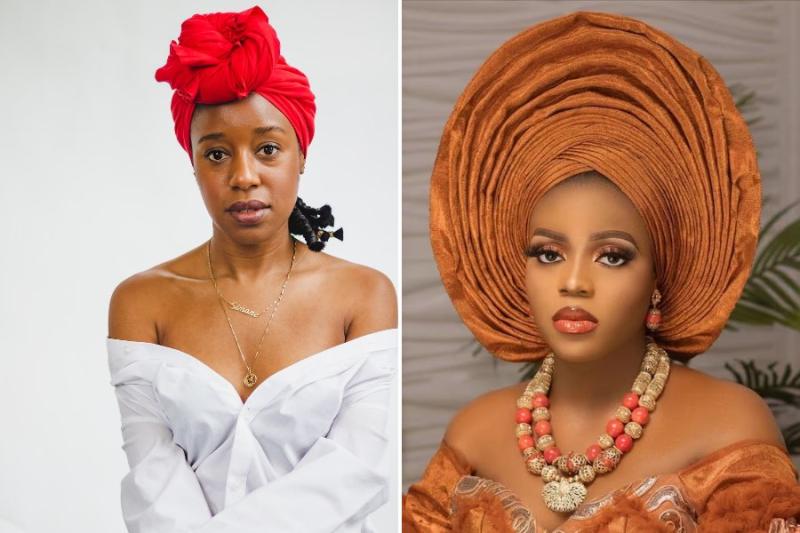Traditional gele head wraps are worn by women in West Africa on festive occasions, while scarves are worn for warmth or as a fashion accessory. Gele is more elaborate than a scarf and calls for a more complicated knot.
What is Gele?
In Nigeria and other parts of West Africa, women wear a head wrap called a gele. Gele-tying is an art form that is frequently passed down through families. It’s created by wrapping a long, wide strip of fabric artfully around the wearer’s head. Gele is traditionally worn by brides and grooms on their wedding day and at religious and other significant ceremonies. The event, the fabric, and the skill of the knotter all influence the final look of a gele. Gele symbolises prestige, wealth, and social standing in West African culture. Wearing it with traditional garments like a buba and iro or a wrapper conveys a sense of grace and beauty. The type of fabric used to make a gele depends on the wearer and the event. Ankara, lace, and aso-oke are all frequently used materials for gele.
The traditional head wrap known as gele has been further popularised by its appearance in music videos and films. Because the fabric must be wrapped and folded in a particular way to achieve the desired style, tying gele is an art that requires skill and patience. Different types of gele, such as the fan gele, rose gele, and infinity gele, each has its own name. Different designs call for different levels of complexity in the form of folds and layers, with some being easier to achieve than others. Women all over the world, not just in West Africa, are donning gele. It’s a common sight everywhere on runways and in glossy fashion magazines.
What is Scarf?
A scarf is a fabric wrapped around the neck, head, or shoulders to provide warmth, protection, or fashion. Scarves can be either rectangular or square. Scarves are typically crafted from various materials, such as wool, silk, cotton, or synthetic fabrics, and can be purchased in a wide range of hues, patterns, and designs. Scarves can be tied and worn in a variety of different ways, depending on the look and the purpose that is desired. They can be worn around the neck in a slack manner, wrapped tightly to provide warmth, or even tied in a knot or bow to give a decorative effect. Scarves can also be worn as head coverings by wrapping them around the head or as shawls by draping them over the shoulders and wrapping them around the neck.
In regions with cooler temperatures, scarves are typically worn as a practical accessory to keep the neck and face warm. On the other hand, in regions with warmer temperatures, scarves are more likely to be used as a fashion accessory to add colour and style to an outfit. You can also use a scarf to add a splash of pattern or colour to an otherwise simple or neutral outfit or to add texture and depth to a layered look by wrapping it around your neck multiple times. In general, scarves are versatile and useful accessories that can be worn in various ways to suit the occasion and the personal style of the person who is wearing them.
Difference Between Gele and Scarf
In Nigeria and other parts of West Africa, women wear head ties called gele. It’s wrapped around the wearer’s head and tied in a fancy knot out of a stiff fabric. Gele and scarves are neck wraps made of fabric, but they serve different purposes and have different cultural significance. Weddings, festivals, and other cultural celebrations call for special clothing, and gele is crucial.
In contrast, a scarf is a piece of fabric wrapped around the neck, head, or shoulders for insulation or style. Scarves are available in a wide array of colours, patterns, and styles and can be crafted from a wide variety of materials like silk, cotton, and wool. Although the gele and the scarf are made of fabric, their shapes, functions, and cultural significance set them apart. Women in West Africa often wear a head tie called a gele on special occasions, while women all over the world wear scarves for warmth and/or style.






